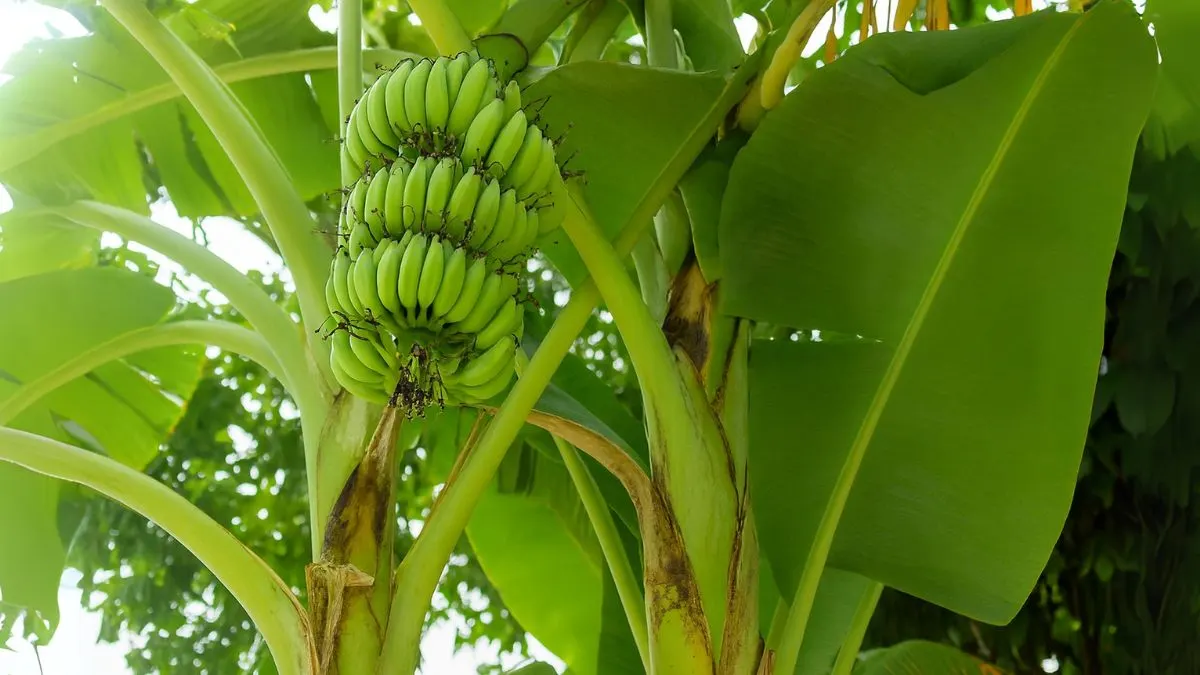When we think of bananas, the first thing that comes to mind is their sweet, creamy fruit. But the banana tree offers far more. Across cultures in Canada, the USA, and worldwide, people admire this plant not only for its delicious fruit but also for the culinary uses of its flower, stem, and leaves. Its sap and fruit pulp provide powerful medicinal benefits. The banana tree also symbolizes prosperity and growth, deeply tied to traditions, wellness, and gardening practices.
This article explores the nutritional value, versatility, and medicinal properties of the banana tree, while also sharing practical tips for planting and caring for it.
The Banana Fruit: Nutrition and Everyday Benefits

The banana fruit delivers both taste and nutrition. Packed with potassium, magnesium, and vitamins, bananas improve energy, aid digestion, and support heart health. Athletes eat bananas as a quick recovery snack because the fruit restores electrolytes and boosts stamina.
In Ayurveda and modern diets, people use banana pulp to relieve acidity, soothe the stomach, and add natural sweetness. Its medicinal properties make bananas a go-to fruit for all age groups.
1. Banana Flower: Culinary and Medicinal Uses
The banana flower remains an underrated gem. In South Asian and tropical cuisines, cooks prepare it in curries, stir-fries, and salads. Its high fiber content improves digestion and supports weight management.
Medicinally, banana flower extracts help regulate blood sugar levels and promote reproductive health in women. Adding them to meals brings both flavor and wellness to your plate.
2. Banana Stem: A Detox Powerhouse
The banana stem is rich in fiber and water, making it excellent for detoxifying the body. In India, people drink stem juice to treat kidney stones and urinary tract issues.
Its crunchy texture works well in stir-fries and juices. Among the many parts of the tree, the stem stands out as one of the most versatile.
Also Read: The Banana Peel + Vinegar Fusion: Natural Fertilizer, Cleaner & Beauty Tonic?
3. Banana Leaves: A Real Gem in Gardening and Cooking
Banana leaves hold a special place in cooking and gardening. In many Asian households, families use them as natural plates that add flavor to steamed or grilled food. They also serve as eco-friendly wraps for storing and serving meals.
Gardeners mulch banana leaves into the soil to enrich it with organic matter. Their size and durability also make them useful as temporary shade for delicate plants.
4. Medicinal Value: Sap and Fruit Pulp
For centuries, people have used banana sap in traditional medicine. They apply it to cuts and burns as a natural antiseptic. Similarly, the fruit pulp cools the skin and soothes irritation.
Thanks to these healing properties, the banana tree remains a trusted part of herbal remedies worldwide.
5. Symbolism: Prosperity and Growth
In Hindu traditions, people consider the banana tree sacred. Families often plant it near homes or temples to bring prosperity and growth. In Feng Shui and Vastu, experts recommend placing banana plants in the northeast corner of a home to harmonize energy.
This cultural symbolism adds to its universal appeal, making it more than just a garden favorite.
Planting Tips for Banana Trees
Growing a banana tree is easier than most gardeners expect. Here are some practical tips:
Requirement |
Planting Tip |
Soil |
Use rich, loamy, well-draining soil. Add compost for fertility. |
Sunlight |
Provide full sun exposure for healthy growth. |
Watering |
Keep the soil consistently moist, but avoid waterlogging. |
Spacing |
Plant suckers 6–8 feet apart for proper growth. |
Climate |
Grow in warm, humid environments. Protect from frost. |
From my own gardening journey, I noticed banana plants thrive in groups. Their large leaves shade the soil, keeping it cooler and preventing weeds.
Also Read: How Banana Peels and Eggshells Can Transform Your Plants Overnight
Growing Bananas at Home
When I planted my first banana sapling in a container, I underestimated its growth speed. Within months, it shot up and produced lush leaves. Harvesting homegrown bananas felt incredibly rewarding. Not only did they taste fresher, but the process also deepened my connection with nature.
Whether you live in a tropical climate or grow indoors with lights, nurturing a banana tree brings beauty, wellness, and sustainability to your space.
Conclusion
The banana tree is one of the most resourceful plants in the world. Its fruit, flower, stem, and leaves all serve culinary purposes, while its sap and pulp provide medicinal benefits. With nutritional value, cultural symbolism, and endless versatility, the banana tree deserves a place in every home and garden.
If you want a plant that offers beauty, wellness, and prosperity, the banana tree is the perfect choice. Start small, care for it well, and you’ll soon see why people have cherished it for centuries.






